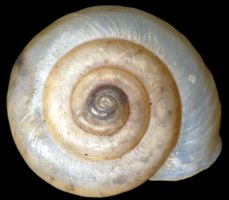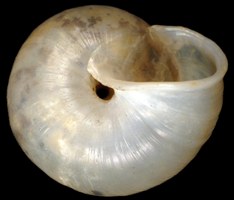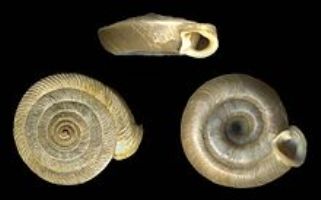
Physical Characteristics
The phylum of Mollusca contains so many diverse species that with one glance, many would consider them to be the same; however, with careful observation, one can see many subtle differences among the Gastropoda. Simply looking at the exterior and classifying the Mollusca based on this would not be an accurate way to identify. One of the obvious give-aways that two species are different is the size of their shells. In suborder Stylommatophora, family Polygyridae, the variation in shell size is very widespread (Leonard, 1959). The sizes range between medium and large with the smallest species having a shell smaller than two millimeters in length (Leonard, 1959). However, the majority of gastropods share the same physical characteristics, so after observing that the sizes are the same, they can then be observed for color. Most gastropods have a solid yellow or brown colored shell (Leonard, 1959). There are small handful of Polygyridae that have dark colored bands on the shells (Leonard, 1959).
In addition to shell size and color, Millerelix simpsoni also possesses critical structures necessary to survival. One of the necessary components is being stylommatophorous or having eyes on top of their stalks, which resemble tentacles (Leonard, 1959). Some other structures are a jaw and a radula, which are relevant to the way that they consume their food (Leonard 1959). The digestive system is also essential to the breakdown of nutrients by means of the salivary glands, oesophagus, crop, gizzard, stomach, and the intestine (Leonard, 1959). The digestive gland contains the stomach and consists of a mass of tubules that lead to the alveoli of the respiratory system (Leonard, 1959).
Referring back to the respiratory system, another physical characteristic unique to Pulmonata of land snails is the presence of a pneumostome, which is an opening to the respiratory system found just above the foot and beneath the mantle cavity (Hickman et al., 2012). This pneumostome originated when the mantle cavity transformed into a lung, and this lung lets in oxygen when the mantle cavity contracts (Hickman et al., 2012).
The Polygyridae family also forms lens-shaped shells with an outward protrusion (Leonard, 1959). Figure 1 accurately reflects this lens-like shape. The spiral shape that all of the figures show is a result of coiling, or twisting of the shell and visceral mass as seen above in figure 4 (Hickman et al, 2012). Based on fossil records, this process had existed long before torsion evolved (Hickman et al, 2012). As a result of a coiled shell, components like the kidney, gill, and auricle have ceased to grow anymore because the largest coil placed too much pressure upon the right side of the snail(Hickman et al, 2012). Removal of the right side gill also prevented slightly less fouling (mentioned on the nutrition page as well) (Hickman et al, 2012).
To learn more about the physical characteristics among
other members of polygyra, visit the following link:
http://arnobrosi.tripod.com/snails/polygyridae.html
Return to Homepage



